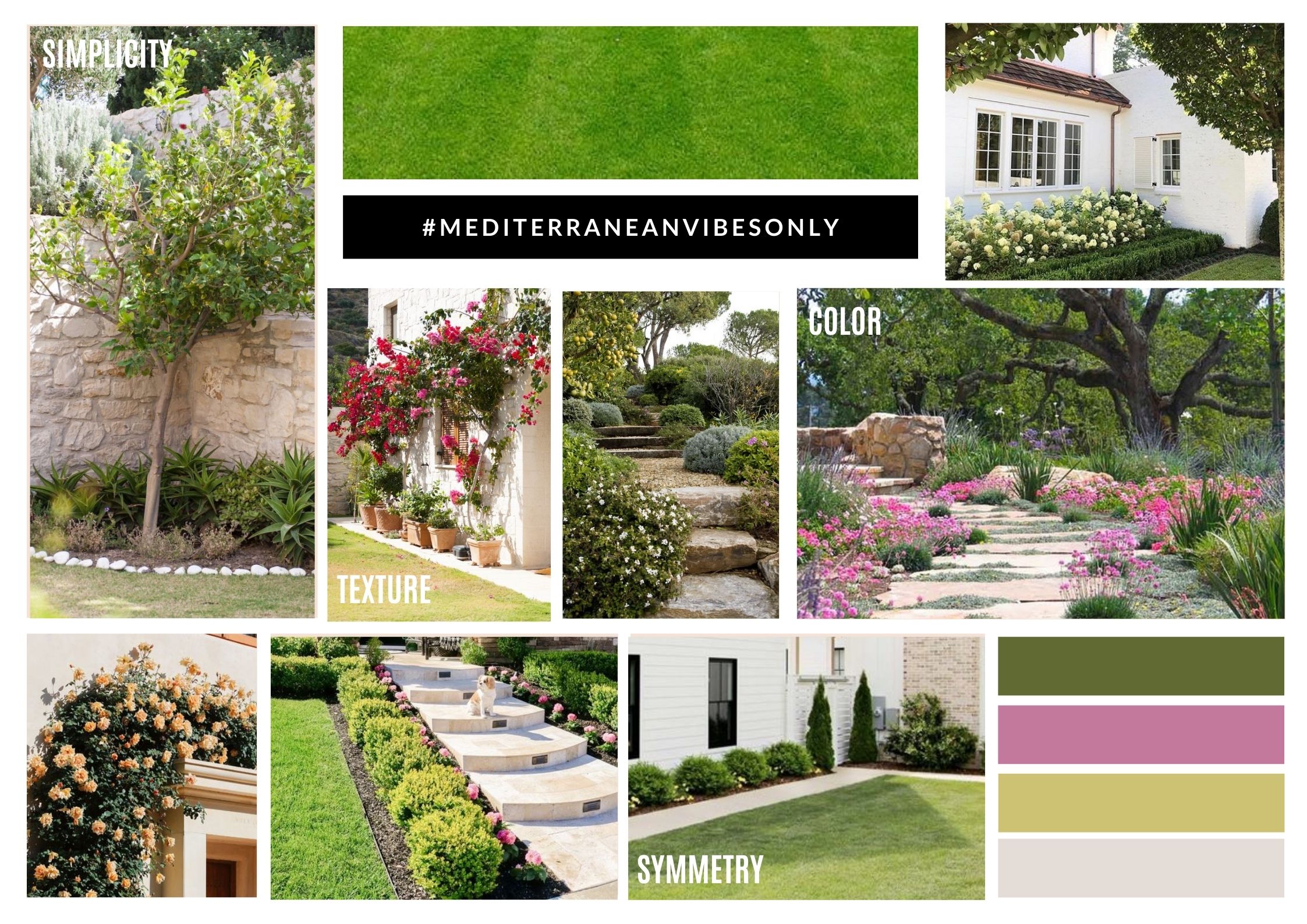Are you thinking of designing a garden for your home? Before you start, you should consider creating a garden moodboard. If it’s your first time (like me), check out my beginner’s guide to building your own garden moodboard.
If you’ve been following my home goals, you’ll know that revamping our garden is NOT on the list. We’ve actually executed a couple of other family home projects that are also not on the list, like painting the exterior and the roof.
Since we were so happy with how the exterior looked, we figured we’ll transform the garden to match the new exterior. I guess you could say one thing led to another because this is another surprise project and a good one at that!
I don’t have any landscaping experience, and I’ve never designed a garden. Needless to say, I’m *very* nervous about how this will turn out.
Since we’re under lockdown again, my family will likely start this project in a month or two… which means I may have to monitor this project virtually since I’m heading back to my own home. So nerve-racking! But, life is about new experiences, and I’m ready to live and learn!
Just to note, I haven’t gone through this moodboard with our landscapers, so things can change at any point. These are just general ideas based on my dad’s likes, what I like, and our overall house style.
Read on to learn more about our current garden situation, our garden moodboard, and find heaps of garden inspiration!
Related to Our Garden Moodboard:
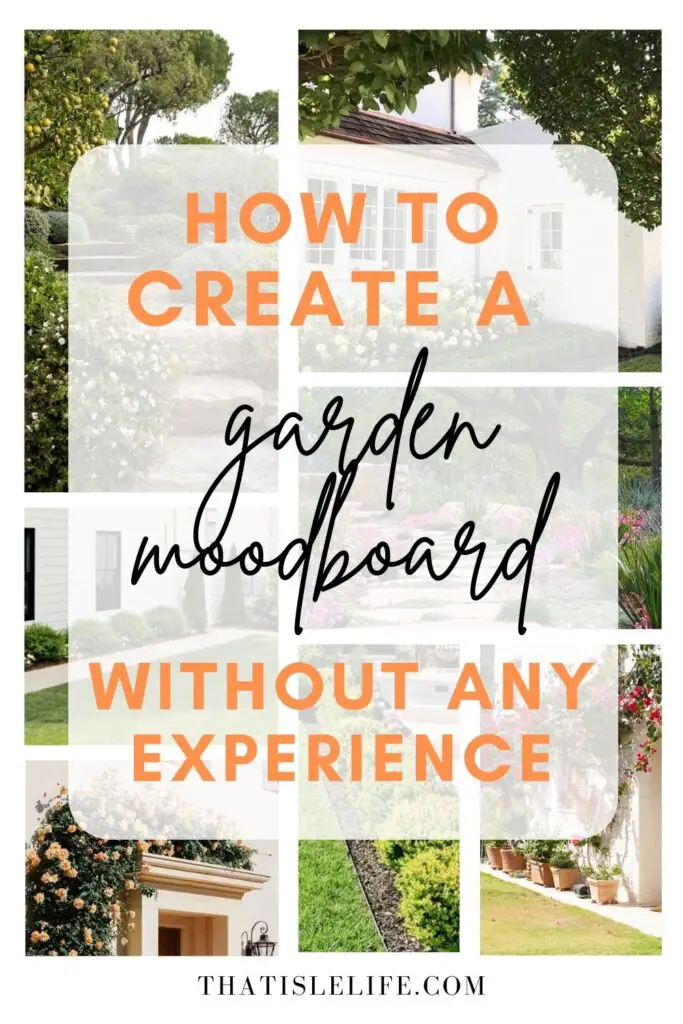
Before
Front garden
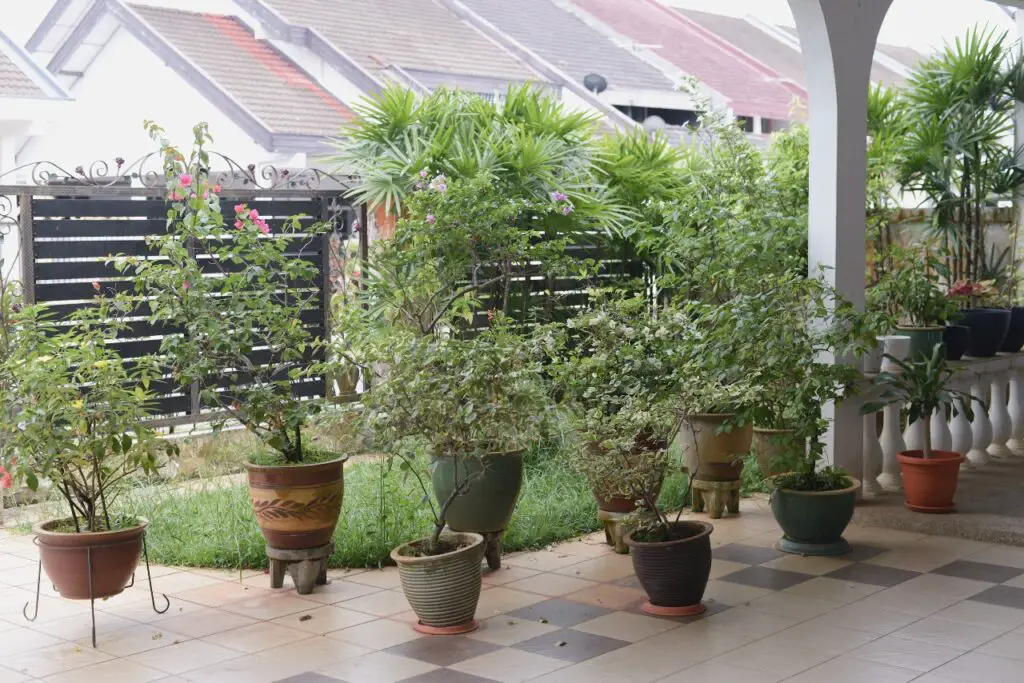
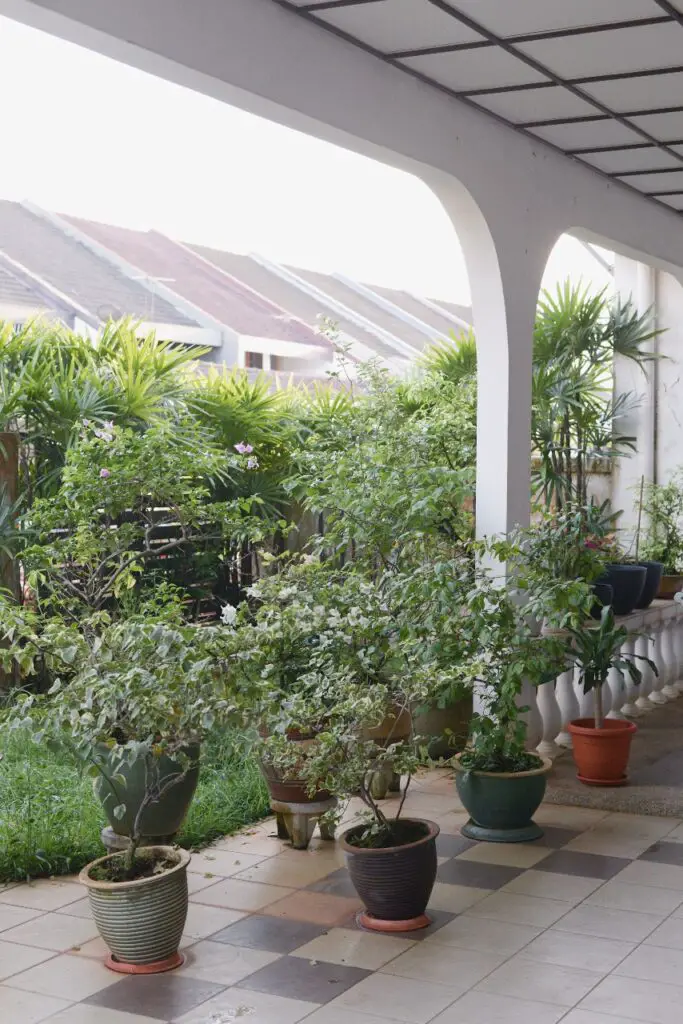
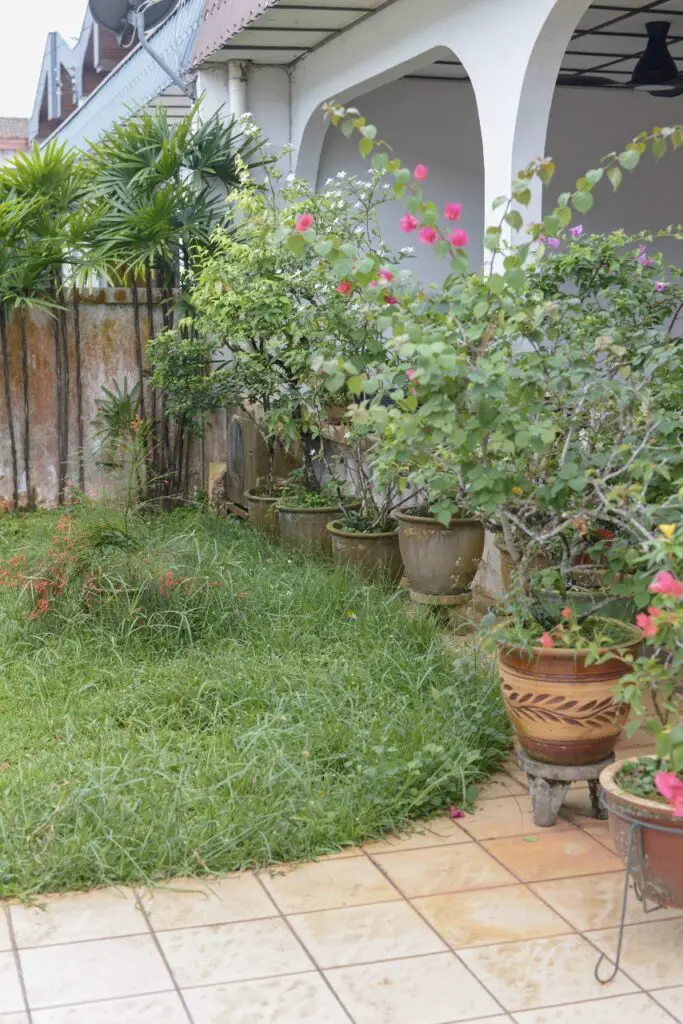
Back garden
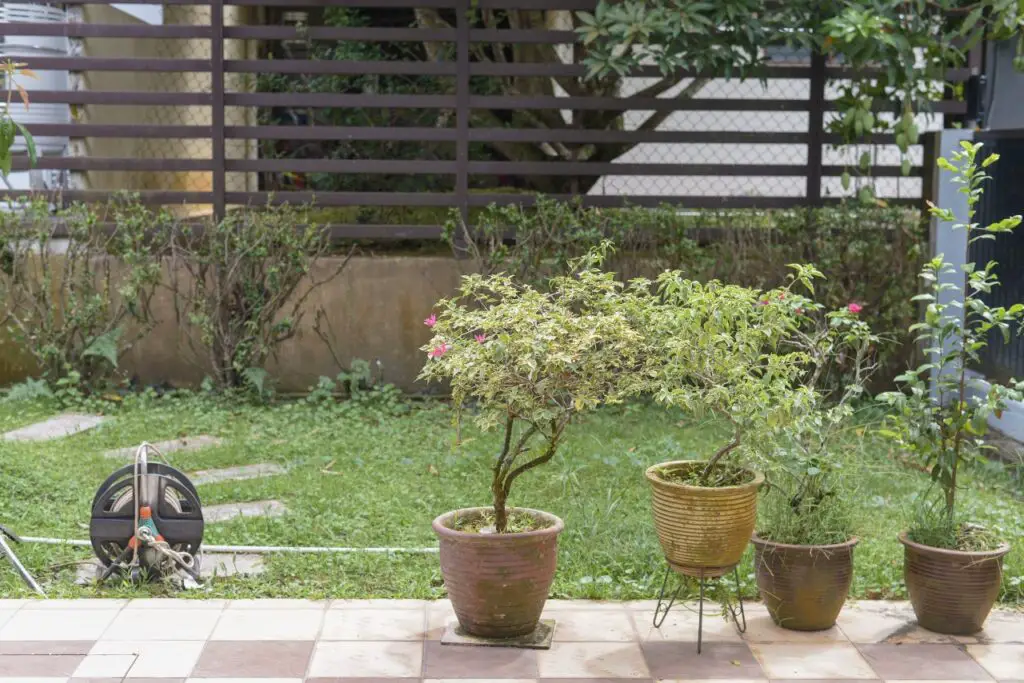
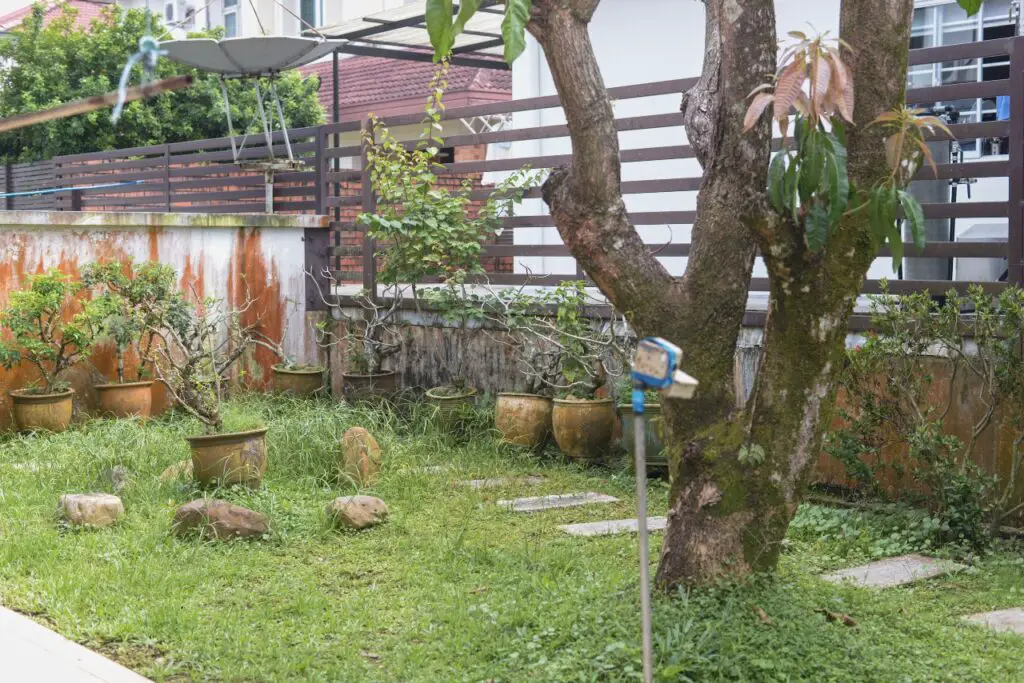
So, we have two gardens in my family home. We have a smaller one in the front right by the patio and a bigger one at the back. Unfortunately, both gardens have seen better days.
Firstly, both gardens are completely overgrown. Although my dad loves gardening, he doesn’t have the physical energy for it anymore. We have a gardener who used to come regularly, but he hasn’t since the lockdown.
Since my dad loves flowers, he has been adding potted plants to the garden. I love the color that the flowers bring, but we have so many different flower varieties that they look chaotic and overwhelming. Additionally, they’re overgrown too and are inhabited by weeds.
Because the flower pots are always out in the sun, they have faded in color. They have also left scuff marks on the tiles which can’t be removed, even with a jet spray! To make things worse, the paint is peeling from the surrounding walls.
A garden is supposed to make you feel calm and at peace. I’ll be honest – our garden has caused me a lot of stress! I can’t stand how messy it looks, and it doesn’t motivate me to spend time outdoors.
Our garden makeover is way overdue, and I’m glad we’re finally doing something about it.
Our garden wishlist
It took me a long time to put this post together because I know nothing about gardening and landscaping, and it took me a while to read up. If you’re new to landscaping like I am, check out these 17 basic elements you need to know when planning a garden from scratch.
According to the article, creating a wish list is the first step towards designing a garden. Since both our gardens are small, I knew immediately I wanted to go with a simple design with one wow factor.
Our garden wish list consisted of the following elements:
- A neat lawn
- A couple of trees or tall topiaries
- Small perennial flower bed
- Bougainvillea hedge
- Statement flower pots
As you can see, we kept our wish list short and sweet. After all, our goal is to create a simple and beautiful garden that’s easy to maintain.
Our garden moodboard
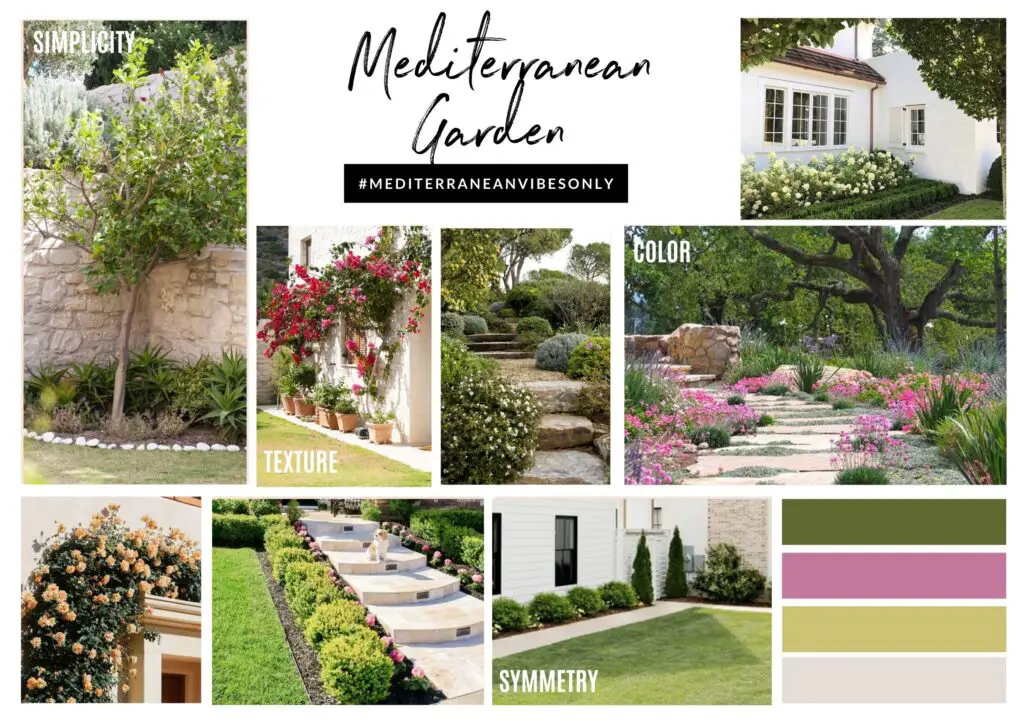
Wow. Creating a garden moodboard is SERIOUSLY hard. I’m very familiar with decorating a house, so I don’t have any problems creating interior moodboards. But, I’m completely clueless when it comes to garden design. I think it took me a week to put this garden moodboard together.
If this is your first time designing a garden, I’ve created a mini guide to help you with your moodboard.
1- Style
First, you should choose the style you’re looking for in your garden. There are two garden styles – formal and informal. A formal garden favors symmetry and balance. The overall look is very clean and serene.
On the other hand, an informal garden is usually wild and organic. The grass is usually kept longer, and different varieties of flowers are often used. Informal gardens have a romantic vibe to them.
As much as I love the organic look of an informal garden, I ultimately chose a formal garden style. Since we lack space, an informal garden can very quickly take over the entire area.
2- Exterior
Next, you should consider how the exterior of your house looks before you decide on the design. A modern garden design will look odd if you have a farmhouse. Similarly, a Japanese garden will not work for a beach house.
Look at the structure of your house and see which garden style will best complement it. Unless you’re planning to remodel, it’s a lot easier to choose a garden design that reflects the overall style of your home.
My family home has a deep brown roof, terracotta tiles, ornate archways, and a huge balcony. This architecture is very reminiscent of a Mediterranean-style home. Because of that, I opted for a Mediterranean-style garden. Think tall plants, bougainvillea hedges, and concrete planters.
3- Color
Once you’ve determined your garden style, you can start choosing elements that will make this garden unique to you and your home. If you have chosen a formal garden, chances are you’re going to pick cohesive colors in your plants and flowers.
Our color selection obviously included green because we want a lush and manicured lawn. Warm colors like yellow, orange and pink go best with gardens that receive plenty of sunlight. My dad and I personally love these colors as well, so we’re going to plant flowers in said colors.
To top it off, I will add pops of white in the color scheme. White provides a balance among warm colors, and looks amazing against lush greens.
4- Preference
The last step is to work out the details of the garden design. What type of plants and flowers do you want to plant in your garden? And, is there a specific arrangement you want them to be planted?
Since we have two gardens, we need two complementary designs. The front garden will have either a tall and lean tree or two or three topiaries in different heights in a corner surrounded by a small perennial flower bed. I’m thinking of using Casey from DIY Playbook’s trick of using the thriller, filler, and spiller method.
According to Casey, the thriller is an upright plant that is put at the back of the planter, or in this case, the flower bed. It is used to create drama and to add height.
The filler is the main part of the flower bed, which usually is the brightest and most colorful. I don’t know what flowers we’ll end up using here, but I’ll include them in the final reveal later.
Finally, the filler refers to a plant that grows over the edge of a pot and “spills” out. Since we’re planting these directly on the ground, we are probably going to eliminate the spiller.
As for the garden at the back, I really want to save some space for walking. Therefore, I’m thinking of keeping the lawn bare except for a single line of ombre-colored bougainvillea hedge. I grew up surrounded by bougainvillea flowers, so it’s nice to have something that reminds me of my childhood.
More garden moodboard inspiration
Check out the rest of my garden inspiration below.
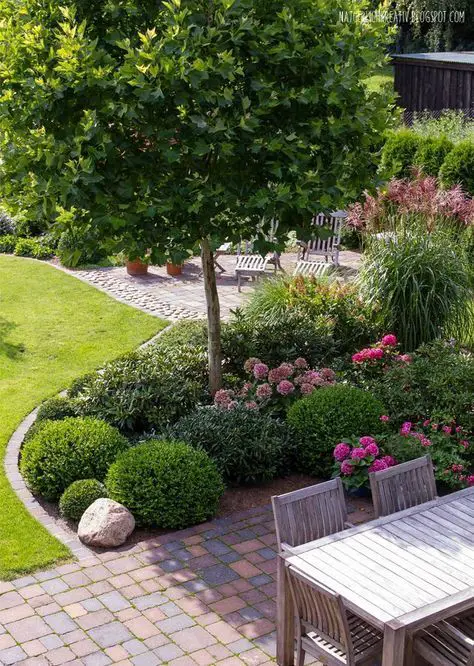
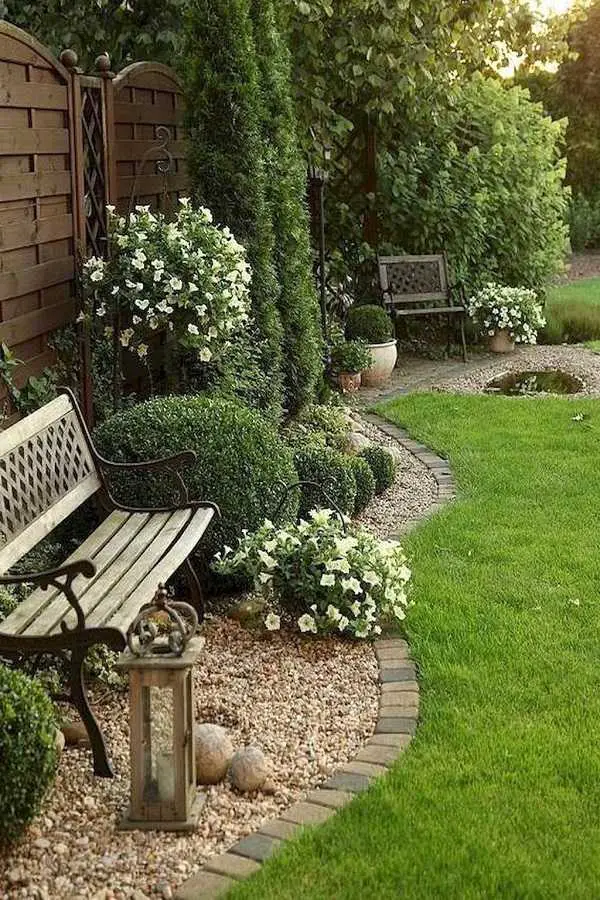
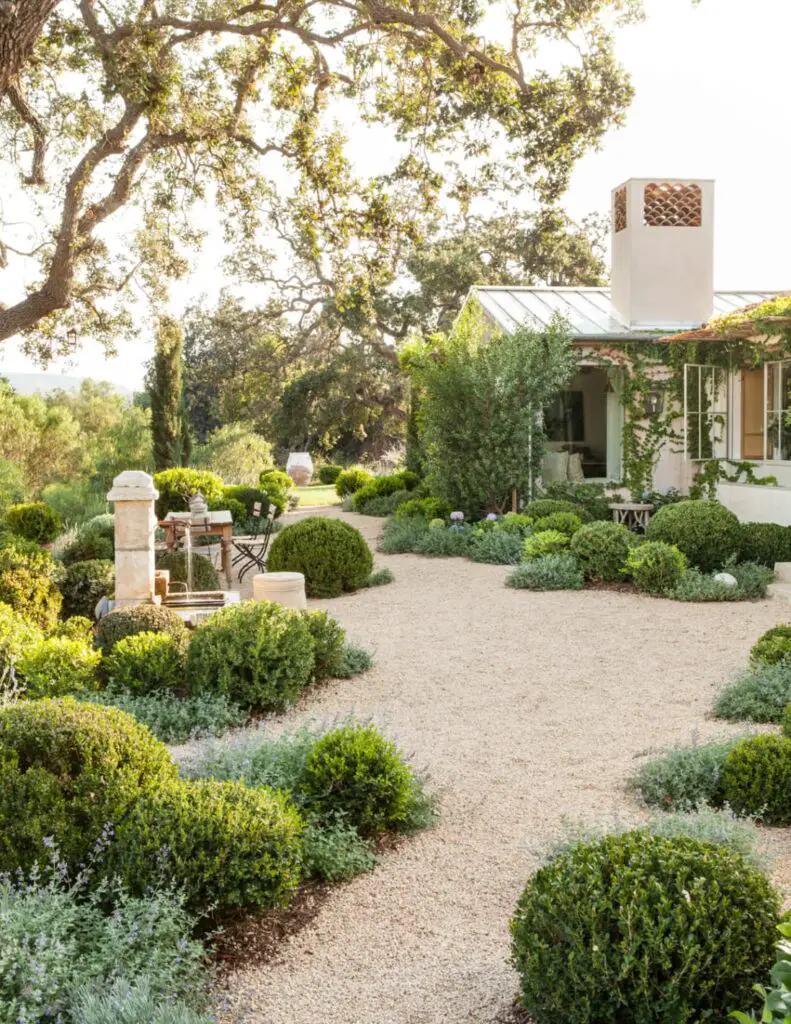
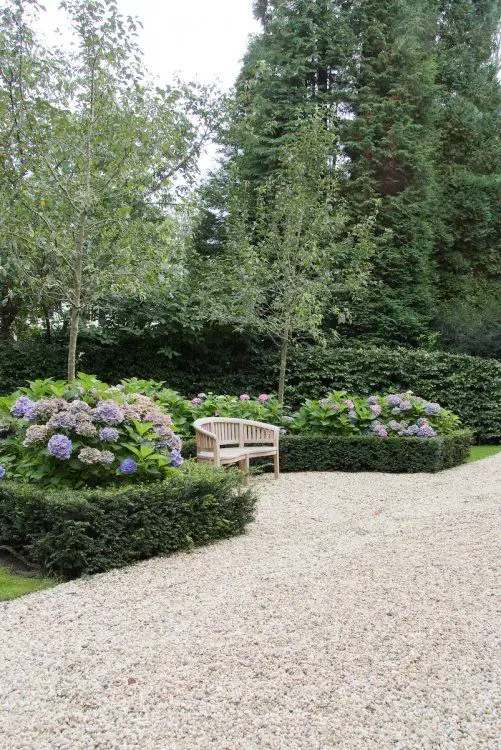
I’m not an expert in gardening and landscaping, but this has been a great starting point for me. My next steps include going over this moodboard and final design plans with our landscapers. Fingers crossed they will be able to nail down our Mediterranean garden vision!
I hope this post has helped you to create your own garden moodboard. All the best, and enjoy designing!

